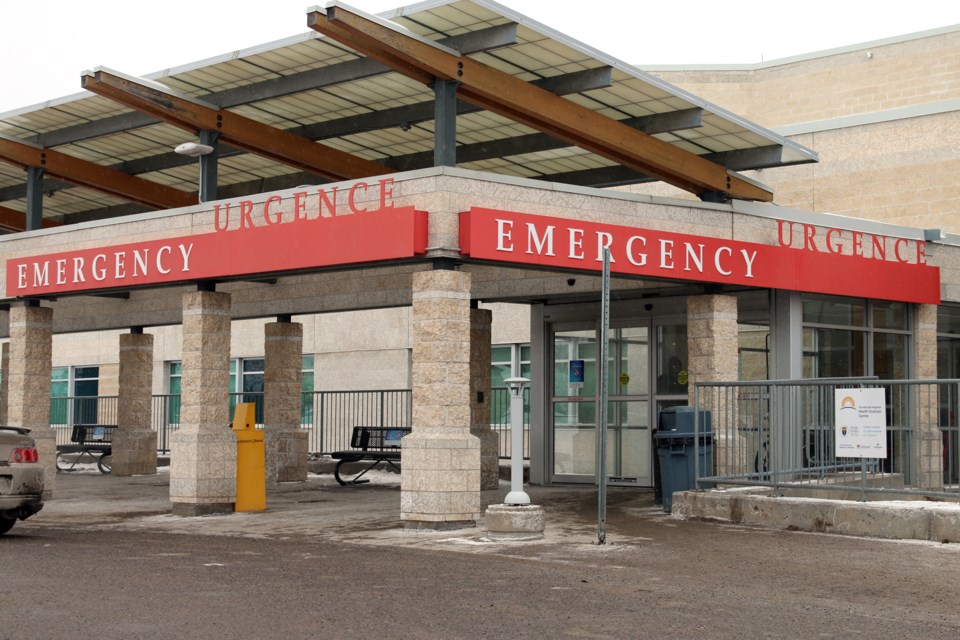THUNDER BAY - A visit to the hospital will continue to look quite different, as administration looks at ways of handling decreased capacity and programs to move patients in and out of the hospital more efficiently.
The Thunder Bay Regional Health Sciences Centre is making some changes to its emergency department in order to move patients through the system more efficiently.
“Right now, we have a designated zone, fast track zones,” said Dr. Stuart Kennedy, incident manager at the Thunder Bay Regional Health Sciences Centre.
“We have opened up a new fast track area in an existing part of the emergency department for people who have low acuity can come into the fast track area accompanied by a nurse and be assessed by a physician. Usually in the fast track area, the acuity is not as high and the turnaround time is shortened.”
The emergency department also includes a trauma area, which has a higher increase in acuity and a longer wait.
Anyone who visits the hospital, either to the emergency department or any outpatient services, will be screened for symptoms of COVID-19. Staff will also be wearing all appropriate personal protective equipment and patients are asked to also wear a mask.
“Out of courtesy and respect, we ask that all patients coming to emergency wear a mask,” Kennedy said. “It’s not mandatory, but we expect to move to that direction in the next week or so.”
The COVID-19 pandemic is also changing the hospital’s capacity in order to protect staff and patients. According to Kennedy, the hospital will not be able to get back up to it’s 120 per cent capacity due to a lack of resources and physical distancing requirements.
“Right now we are sort of designated by Ontario Health North that we cannot go above 90 per cent capacity unless there is extraordinary circumstances to make sure there is enough room for physical distancing, which is important,” Kennedy said. “Also, the more increased capacity in a hospital, the more increased risk of transmission of infectious disease. We want to make sure we follow all the public health rules.”
When at 120 per cent capacity prior to the outbreak, wardrooms would have four patients and sometimes patients would also be kept in sunrooms and treatment rooms.
“We are using a lot of spaces that are not conventional spaces for having people in when we go above 100 per cent capacity,” Kennedy said. “The increased risk of transmission the more people you have in the hospital, so we need to stay below 100 per cent capacity.”
The reduced capacity also means the hospital must find ways to reduce hospital admissions and it is looking at ways of providing more homecare services and utilizing community resources.
“We are looking at new programs so we actually can have a more timely referral to a specialist area that does not require hospital admission,” Kennedy said.
“We’ve always had that focus on homecare. We have to be more aggressive in utilizing those resources. Sometimes the homecare resources, the number of hours that can be delivered on a daily basis can be limited, so the patients may need more homecare if they are going to stay home. That all has to be looked at by the province and increasing the amount of funding to homecare.”
The hospital will also be launching an internal medicine clinic in the coming weeks, which will allow healthcare workers to treat people with acute problems as an outpatient and then follow up with the internal medicine clinic or primary care physicians.
“We have to look at our patient flow and not admitting as much if we can actually provide services in the community and earlier discharges if services are available in the community,” Kennedy said.
“We won’t turn anyone away but we need to make sure they will be going into the right environment.”
This week the hospital is also welcoming back senior officials in several departments who have been working from home. They will be developing a plan to allow workers in departments such as human resources, payroll, and other administrative roles to return to work safely.
“Not all staff will need to come back,” Kennedy said. “We want to make sure they come back safe, but if they can work from home, they will be allowed to work from home.”
Between 300 and 400 staff at the hospital have been working remotely from home during the pandemic.
